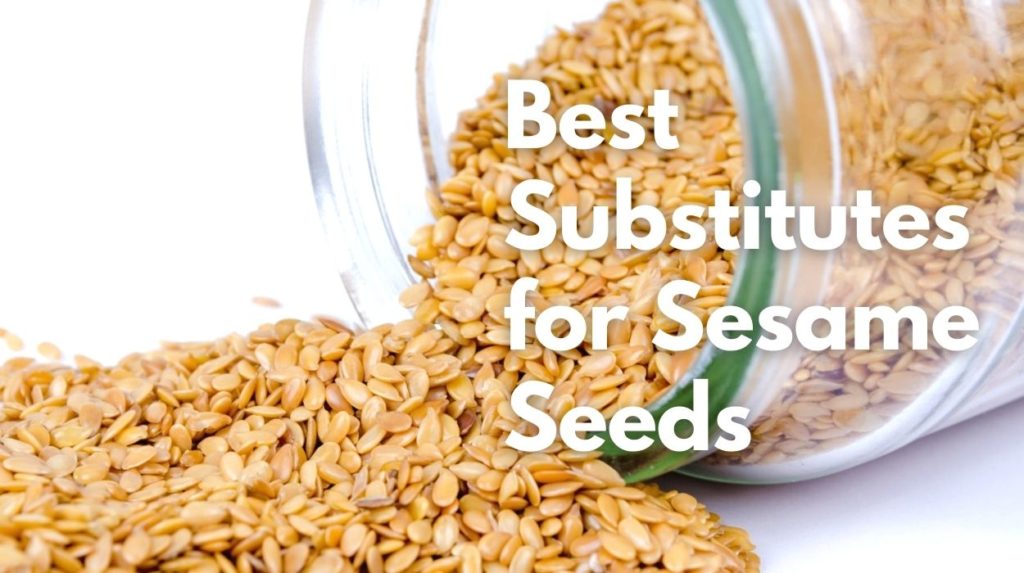
Toasted sesame seeds in soups and stir-fries can enhance the texture with their crunchiness and significantly improve the flavor. Generally, people prefer adding it to salads, bagels, breadsticks, etc.
However, can you recreate the same crunchiness and nutty flavor with something else? Yes, you can with sesame seeds substitutes like poppy seeds, flaxseeds, black sesame seeds, etc. Such alternatives can be blended into any recipe to enjoy the same texture in the absence of sesame seeds.
If you want to know more about such substitutes and how and when to use them, go through the following article. You shall have all of your questions answered.
List Of The 10 Best Substitutes for Sesame Seeds
These substitutes are readily available and can be used in numerous dishes instead of sesame seeds. So without any more waiting, let’s look at these alternatives. Here is a rundown of the top sesame seed replacements.
1. Poppy seeds

Poppy seeds and sesame seeds both share a similar flavor profile. They have a pleasantly nutty flavor and are ample in protein and fiber. Poppy seeds are another fantastic option if you want a meal with a subtle aroma but a strong flavor. Poppy seeds are undoubtedly the best alternative for sesame seeds in terms of texture and look.
It can be used in various snacks and cuisines, including bread toppings, pancakes, veggies, pastries, and sandwiches. You’ll need to use extra poppy seeds in your recipes because they’re smaller than sesame seeds.
2. Flax seeds
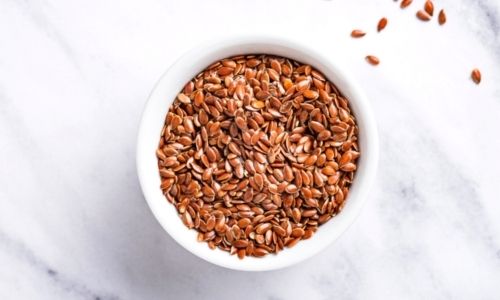
Flax seeds are abundant in protein and fiber and may be used in place of sesame seeds to add texture to your recipe. Flax seeds are rich in protein, fiber, omega-3 fatty acids, and linolenic acid, which aid in preventing and treating heart disease. Although flax seeds have a nutty flavor comparable to sesame seeds, they lack sesame seeds’ sugariness and flavor.
Flaxseed may be used to make bread, muffins, bagel, salads, or just swirled in smoothies and juices. Flax seeds may be the finest choice if you want a similar color and flavor as sesame seeds.
3. Black sesame seeds

Some people may be amazed to learn that sesame seeds come in a variety of colors. If you run out of sesame seeds or can’t find your regular sesame seeds, use black sesame seeds instead. This type of sesame seed is the most nutritious and can help you heal various disorders.
Black sesame seeds are abundant in zinc, iron, protein, and calcium. You can use black sesame seeds in rice and noodles or sprinkle them on salads or bean dishes.
4. White sesame seeds
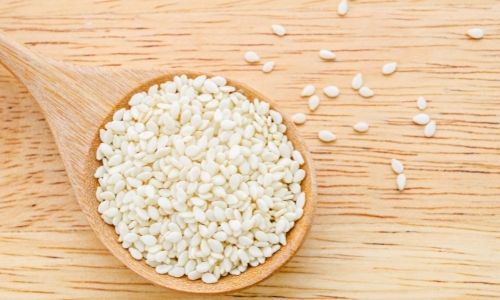
After regular sesame seeds and black sesame seeds, the next best thing is white sesame seeds. Because this variety of sesame seeds has a deeper flavor than regular and black sesame seeds, many people like to cook with it. It contains a lot of fiber, magnesium, iron, and calcium to give you excellent taste with nutrition.
White sesame seeds are frequently used to prepare burger buns, doughnuts, pastries, and bagels. Aside from that, it may be used as a garnish to improve the flavor of your dishes.
5. Sunflower seeds
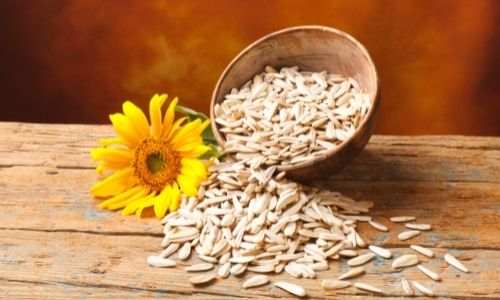
Sunflower seeds can be utilized in place of sesame seeds. Sunflower seeds are oval and much more significant than sesame seeds, which are tiny and flat. This seed has several health benefits and is a good source of vitamin E if you have a vitamin E deficit.
Sunflower seeds may be used to provide texture to salads, bread toppings, burgers, and porridge, just like sesame seeds. Sunflower seeds have a salty flavor, so be careful not to add too much salt to your food and spoil it.
6. Hemp seeds
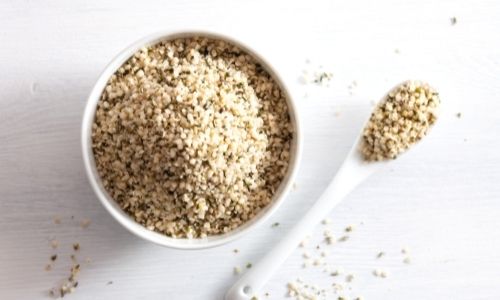
Hemp seeds are the closest match for sesame seeds in taste, but they are the hardest to come by of all the alternatives. Hemp seeds, in addition to sesame seeds, can be used to substitute for poppy seeds. These seeds are used in many Asian and Middle Eastern recipes.
Hemp seeds have no significant aroma or flavor. Thus, they won’t go well with rice dishes like sushi. However, you may use them as a garnish in simple recipes for a mild flavor.
7. Chia seeds
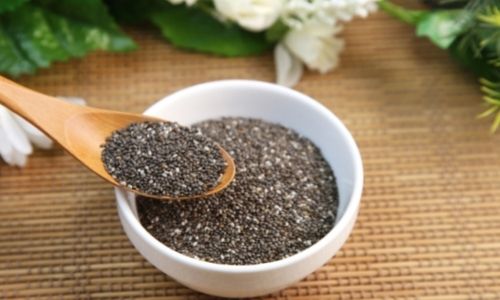
Chia seeds are tiny, yet they carry a big nutritional punch in the form of minerals and vitamins. Chia seeds have the highest concentration of nutrients in their seeds, making them an excellent sesame seed replacement. To receive the benefits, you don’t need to consume a lot of chia seeds.
They can be sprinkled on stir-fried vegetables or topped on pastries or bread. Keep in mind that chia seeds don’t have a distinct flavor or aroma of their own, so they adapt to the flavors of the other components in the recipe.
8. Pumpkin seeds
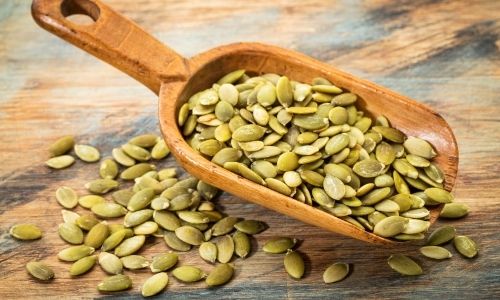
When it comes to appearance, pumpkin seeds are pretty bigger in size as compared to sesame seeds. Other than that, it has a similar flavor to sesame seeds. Pumpkin seeds are so healthy that you can add a little bit extra to your dishes without feeling guilty about it.
They’re also commonly used to make protein and granola bars for nutritional reasons. In addition, pumpkin seeds can be used as a sesame seed alternative in foods such as noodles, soups, and toasts.
9. Chopped nuts

One of the reasons everyone loves sesame seeds is their nutty flavor. So, if you are looking for alternatives to substitute with sesame seeds, chop any nuts that you like to get the same nutty taste. You can use any nut like almonds, peanuts, or walnuts.
Along with the flavor and gentle aroma of the nuts, you gain their health advantages. Chopped nuts complement brownies, cookies, bread, and savory foods such as stir-fry, noodles, and a variety of other cuisines.
10. Pistachio seeds
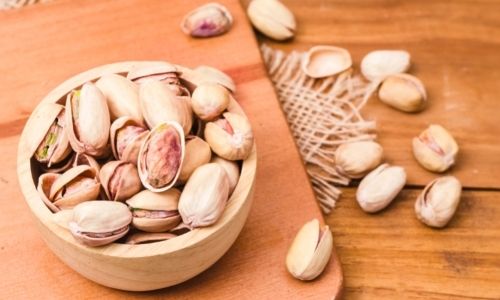
Last but not least is pistachio seeds. Because these seeds have a neutral flavor, you may use them in various savory meals or combine them with sugar to make sweet dishes. To make a flavorful dish, simply shell some pistachios, coarsely chop them, and prepare some delectable foods.
Pistachios must be roasted before they can be used in recipes.
So, if you’re going to bake a pistachio bun or loaf, it’s best to put the pistachio inside the dough rather than on top to avoid scorching.
How to Store Sesame Seeds?
In case you want to avoid dealing with sesame seeds substitutes in the future, you can try buying them in bulk. But if you plan to do that, it is essential to know the correct storage techniques.
The following are some of the best ways to store sesame seeds:
1. Storing in an Airtight Container
The minute you bring home the sesame seeds, it is best to transfer them to an airtight container. If not, a ziplock bag will also work. However, ensure that the bag or container is free from moisture to prevent any quality degradation. Additionally, this container must be kept away from direct sunlight.
2. Freezing
If you want to store your sesame seeds for months, you can try freezing them. Simply place the airtight container with sesame seeds into your refrigerator.
3. Converting them into Tahini
If you are a fan of tahini, it is advisable to use a significant portion of sesame seeds to prepare tahini. This will retain its freshness for 4-6 months in the pantry, and 12 months in the refrigerator.
FAQs
How do sesame seeds taste?
When roasted, sesame seeds have a nutty taste and a distinct scent. Perfect as a garnish for savory foods as well as hot sweets. They are fragrant and tasty, but there are such wide seed varieties on the market that they can be readily substituted.
Is it possible to use sesame oil for sesame seeds?
Yes, you can substitute sesame oil for sesame seeds. Generally, it is estimated that two teaspoons of sesame oil would be sufficient to replace one and a half teaspoons of sesame seeds.
Is it Always Necessary to Grind Your Seeds?
Many people assume that grinding or breaking seeds is essential for healthy digestion, but this is not true. Whether you grind your seeds or not, the health advantages remain the same.
Conclusion
In this post, we discussed the best sesame seed substitutes and how they may help to improve the flavor of your recipes. We hope that if you can’t get sesame seeds, you’ll be able to find one of these alternatives. Due to a lack of availability, you can also eliminate the sesame seeds, but this will change the flavor of your meal.
Returning to our possibilities, each has its own flavor profile and set of advantages, so you may experiment with them to see which one piques your interest the most and then choose one.



